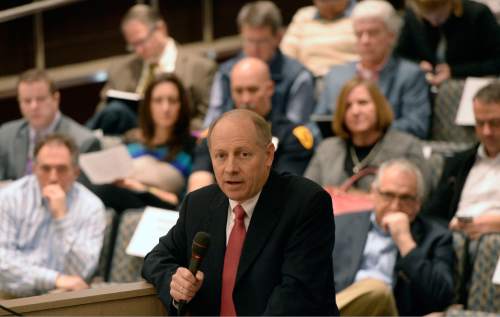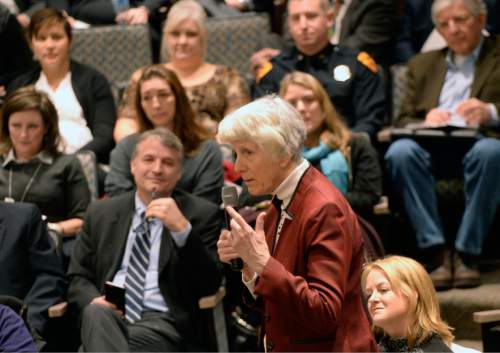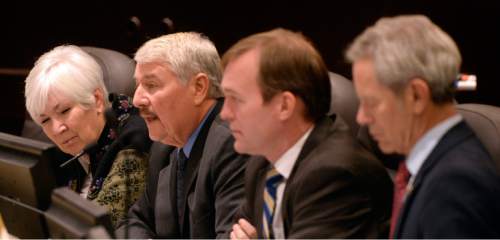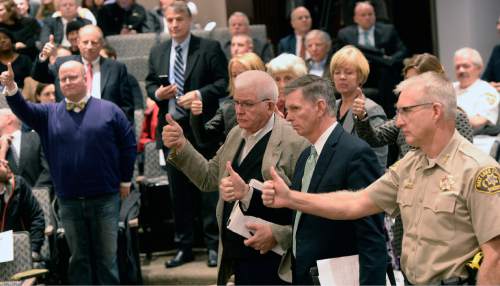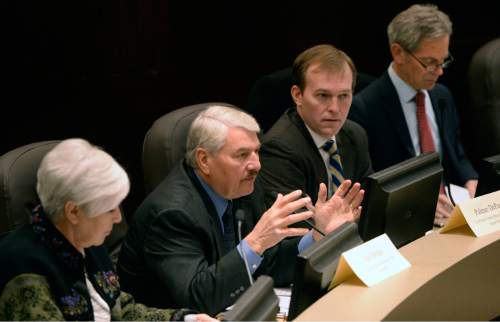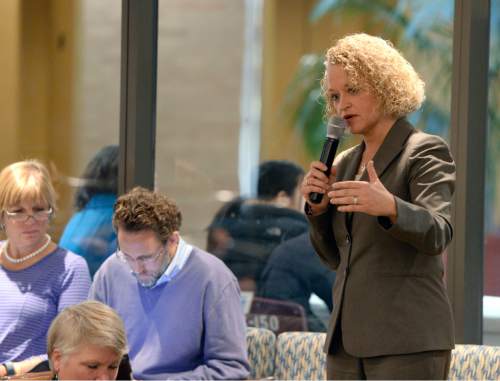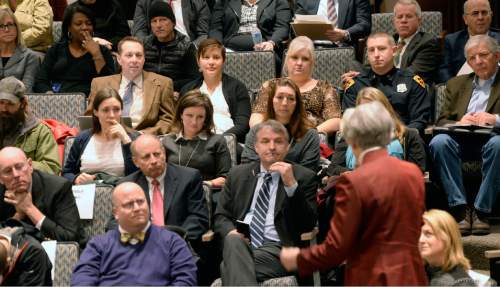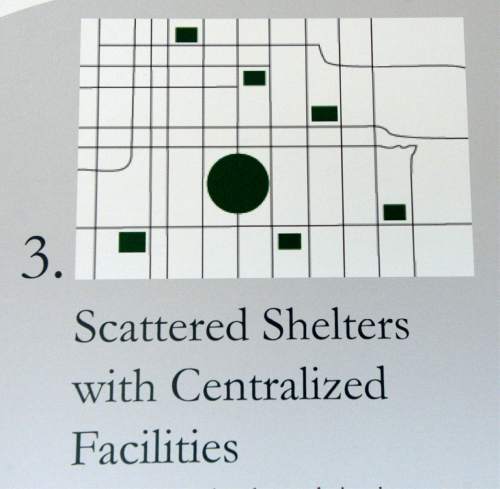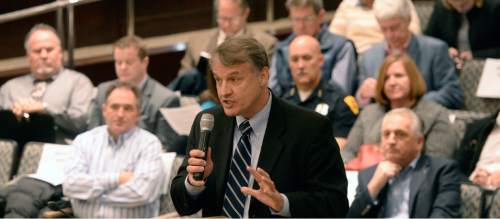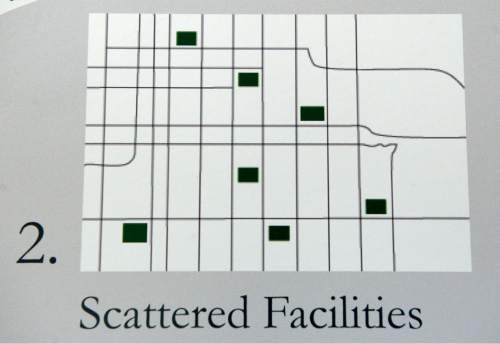This is an archived article that was published on sltrib.com in 2015, and information in the article may be outdated. It is provided only for personal research purposes and may not be reprinted.
A new "scattered" model for small homeless shelters was approved Monday by Salt Lake City Mayor Ralph Becker's commission on homelessness and, together with Salt Lake County Mayor Ben McAdams, will seek from state lawmakers a $20 million initial appropriation and $7 million in annual funding — including $3 million to prevent homelessness.
In so doing, McAdams and others said the brunt of homelessness should not be borne by the capital city and Salt Lake County alone.
Such an appropriation, McAdams said, could bring an additional $10 million in private donations.
No new shelter sites have yet been selected.
About $52 million in mostly federal funds is now spent in Salt Lake County annually on homeless services. Another $42 million is spent on emergency hospital care, police and jail for the homeless.
In an interview after Monday's joint session of the mayor's commission and the county's committee, House Speaker Greg Hughes, R-Draper, said the Legislature would take up the matter in January, but he made no promises.
McAdams said a new system would track homeless people and the services they receive in an effort to yield greater efficiency for money spent, as well as better outcomes for clients.
"We are talking about data and dollars," he said. "But we are also talking about homelessness and how to help these individuals to [achieve] stability and self-reliance."
Unlike the present system in which each person must sign in at The Road Home shelter before receiving any services, the new program would allow clients to register with any provider and be guided by a caseworker to available options.
The proposal for decentralized facilities scattered around the community for specific subgroups, such as homeless families with children, veterans and victims of domestic abuse, passed the mayor's commission overwhelmingly. It was the outcome of 11 months of deliberation by the commission that acted in tandem with the Salt Lake County committee that analyzed program efficiencies.
McAdams said 31 providers of homeless services that participated in the county's working group have endorsed recommendations, such as diverting individuals and families from emergency shelters whenever possible and meeting the basic needs of those in crisis.
McAdams, along with former Salt Lake City Mayor Palmer DePaulis and Utah Jazz owner Gail Miller, who chaired the site-selection committee, noted that a single, large, "one-size-fits-all" shelter model is not working well enough to get the homeless back to a stable environment.
Moving a large shelter from one place to the next doesn't solve the problem, McAdams has said. It just shifts it to a different area.
Interim Police Chief Mike Brown said that large gatherings of any kind require a significant police presence. That is true of homeless services on Rio Grande Street.
"As you move to the scattered site [system]," Brown said, "it will take far fewer police officers."
A successful homeless system must tailor services for each individual, Miller said. It became clear during the past 11 months that a scattered-site approach with services for each subgroup is optimal.
"We want to create the best healing place for each subgroup," she said. "Each person should be treated like an individual."
Neighborhoods that host homeless service facilities should be welcoming and safe for all who live, visit, work, recreate, receive services or do business there, according to a joint statement from the committees. Those neighborhoods also should offer access to employment, job training and positive activities during the day.
Salt Lake City Mayor-elect Jackie Biskupski, who will play a pivotal role after she is sworn in Jan. 4, endorsed the scattered-site approach. She said identifying shelter sites will be challenging from a zoning perspective as well as from a public-relations standpoint.
The circumstances surrounding The Road Home may be off-putting, she said, but the YWCA shelter for victims of domestic violence is a good example of a neighborhood shelter. It has no negative impact on the surrounding area, Biskupski said.
Glenn Bailey of the Crossroads Urban Center stressed the need for affordable housing. The lack of it, he said, underlies homelessness.
Included in the new strategy would be a homeless-prevention program that would act to keep families from becoming homeless in the first place, McAdams said. It also would entail a greater push for affordable housing.
In thanking the commission and committee members, DePaulis noted that a lot of work has yet to be done. "One part of the process is coming to an end and another one is beginning."


